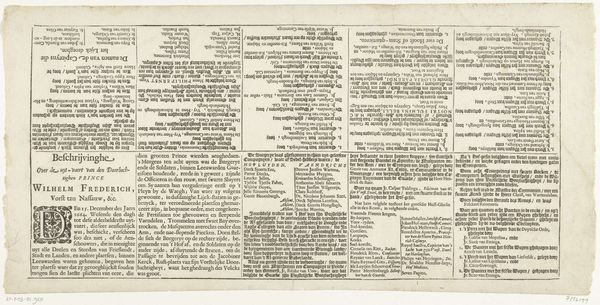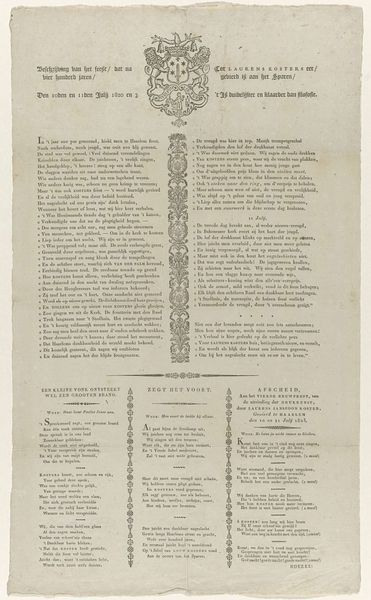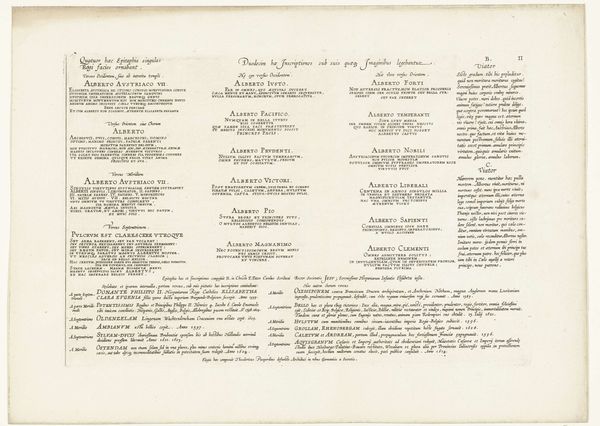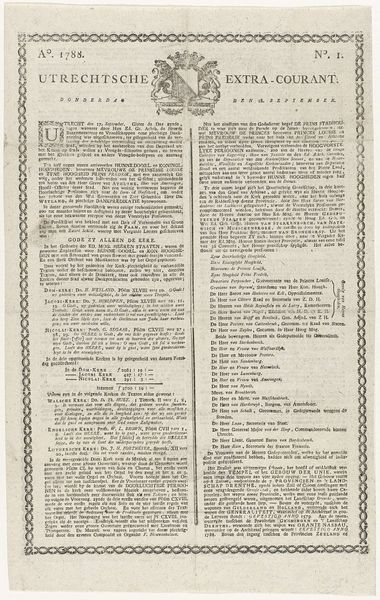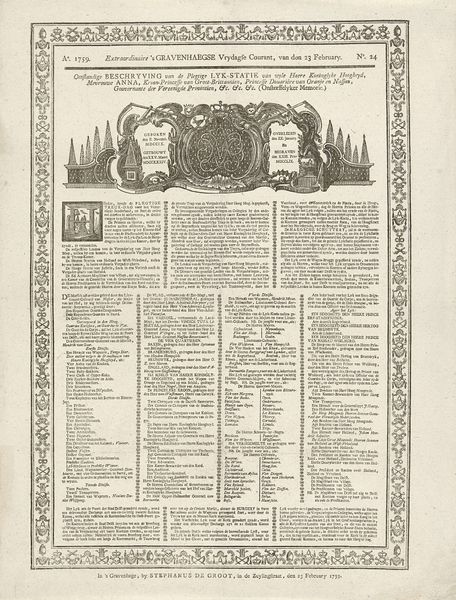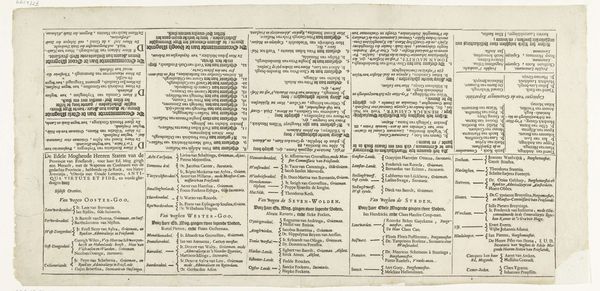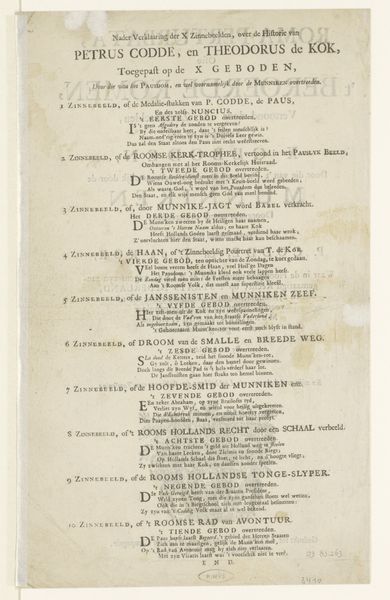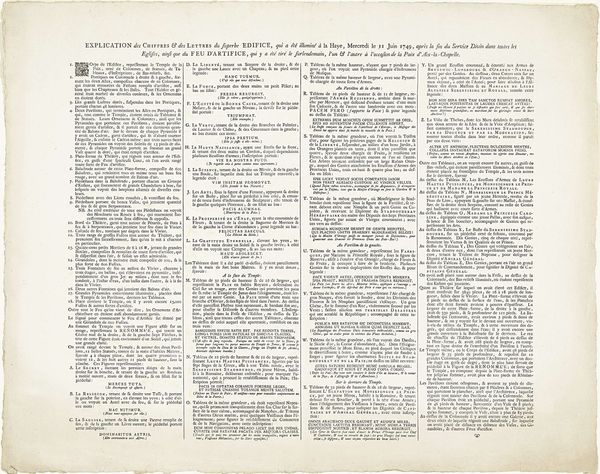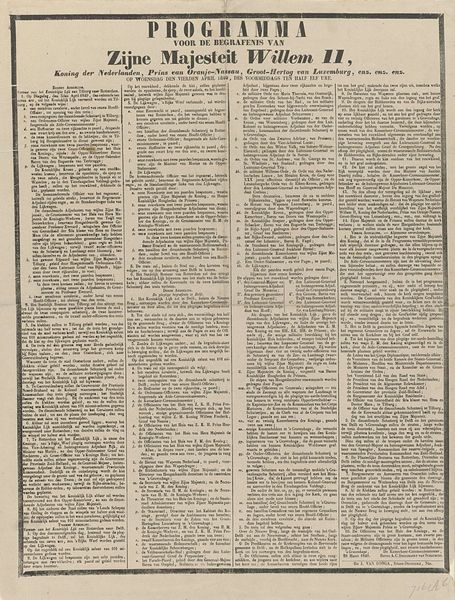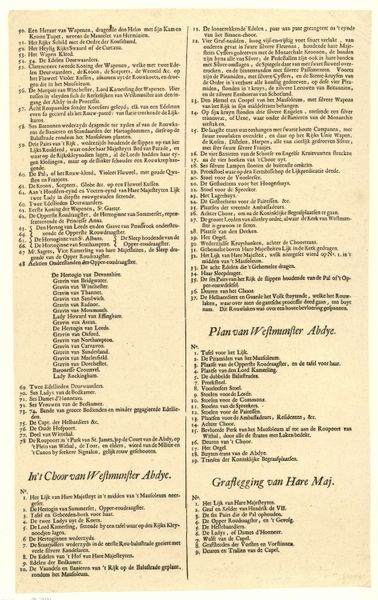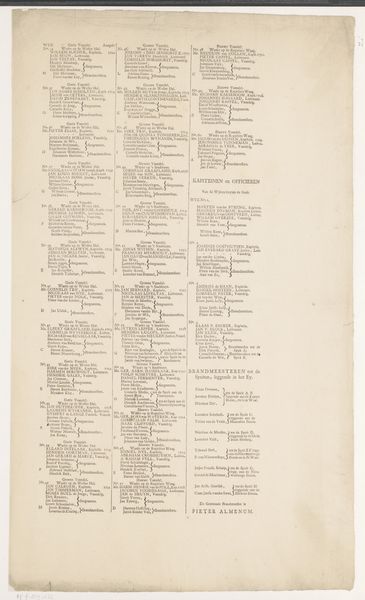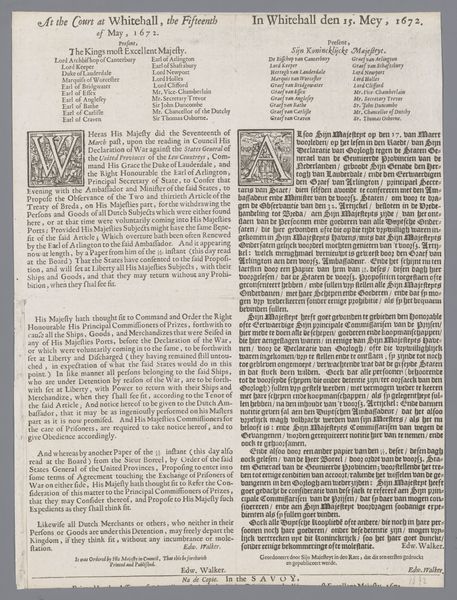
print, paper, engraving
#
portrait
#
baroque
#
dutch-golden-age
# print
#
paper
#
text
#
history-painting
#
engraving
Dimensions: height 540 mm, width 390 mm
Copyright: Rijks Museum: Open Domain
Curator: Looking at this somber print, I can’t help but feel the weight of the era—it’s from 1759, a memorial piece called “Grafschrift op prinses Anna van Hannover,” made by Pieter Jan Entrop. Immediately, its vertical, obelisk shape strikes me as something that’s not only sad, but oddly…rigid? Like a stone frozen in time. Editor: That rigid structure is deliberate; it’s emulating a tombstone, mimicking the visual language of mourning common in baroque memorial prints. The sheer volume of text speaks to a desire for preservation—a cultural insistence on not forgetting Princess Anna’s place in history. She wasn’t just a royal; her identity as a British princess married into the Dutch aristocracy weaves into the narrative of dynastic power and geopolitical strategies of the time. Curator: Right, you know, reading some of it now – albeit in translation, because, oof, the Dutch—it has such an… earnest quality. Like a community collectively holding its breath. But, this level of ornamentation for a piece about loss is odd, right? Editor: Not at all; rather, that ornamentation underscores a critical point about death in the Baroque era. Consider the broader narrative—this is a period profoundly preoccupied with the spectacle of power, even, or especially, in death. Ornamentation served not just aesthetic purposes, but solidified the subject’s standing. It transformed personal grief into a potent symbolic declaration. Think of how this commemoration operates: her virtue, fidelity, love, and trust—values elevated to a civic good – not simply individual attributes. Curator: So, it’s grief as civic duty? A little bleak, but I get it. And there’s a… defiance, maybe, woven in. “Though death steals, Anna remains…” Editor: Exactly, you feel it, even through the dated language! This piece encapsulates a Baroque understanding of loss, layered with statements on identity, the symbolic gravitas, and an intense societal gaze on death. It prompts crucial questions: How do public personas intersect with personal legacies? How are women remembered versus men? This engraving operates at the crossroads of memorial practice, political agenda, and cultural identity formation. Curator: You’ve managed to peel back its layers—revealing a narrative far deeper than just lamentation, and making me rethink my quick judgements based on first impressions. Editor: Precisely. Isn’t it so incredibly striking how art – even in grief—invites us to consider echoes of intersectional narratives that continue to resonate today?
Comments
No comments
Be the first to comment and join the conversation on the ultimate creative platform.
